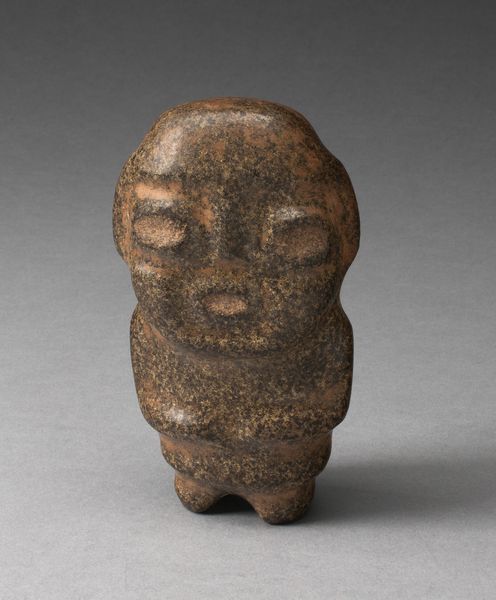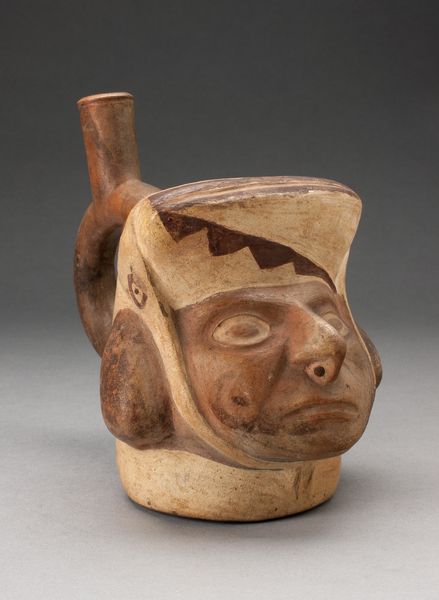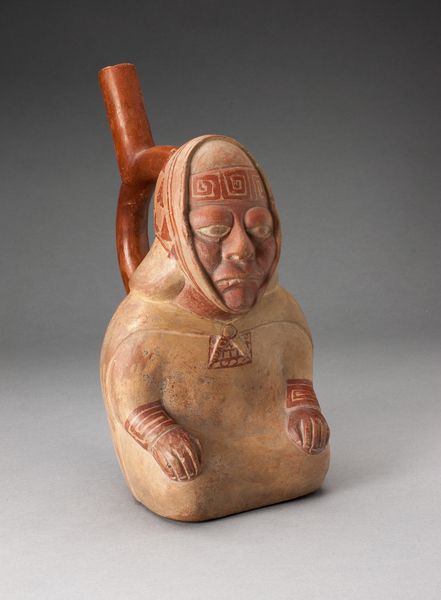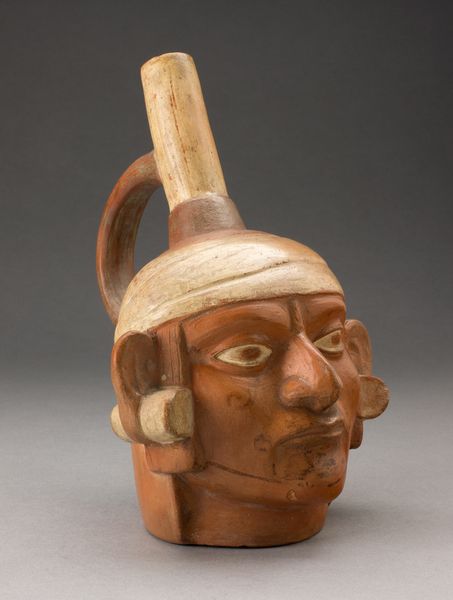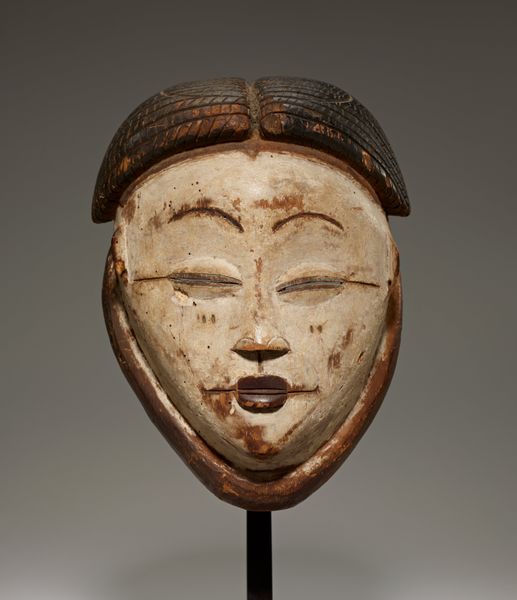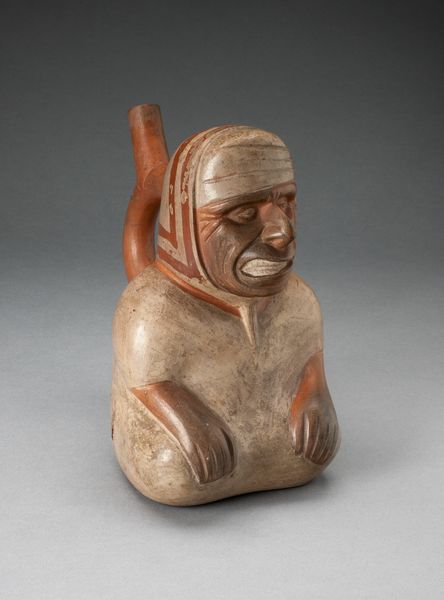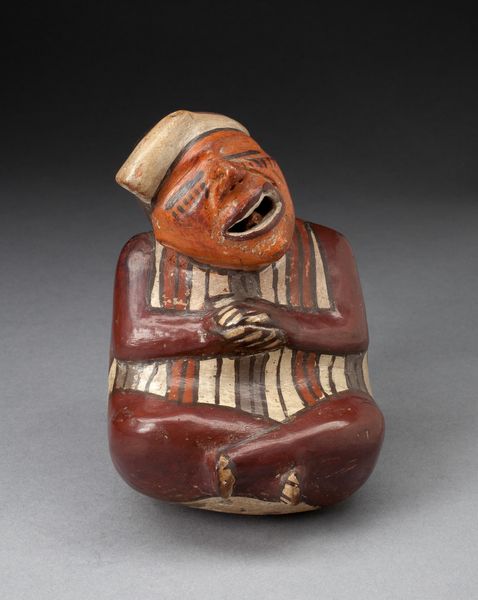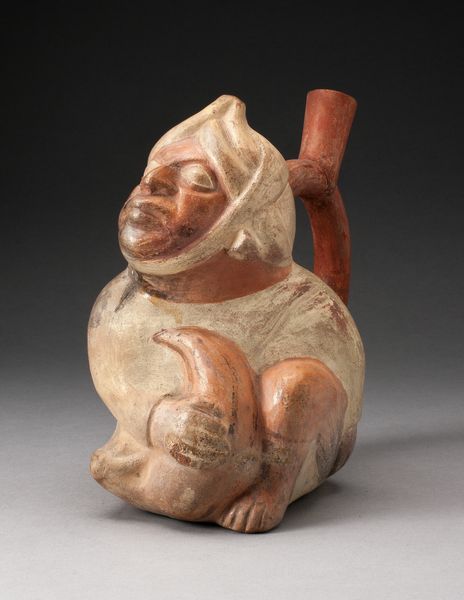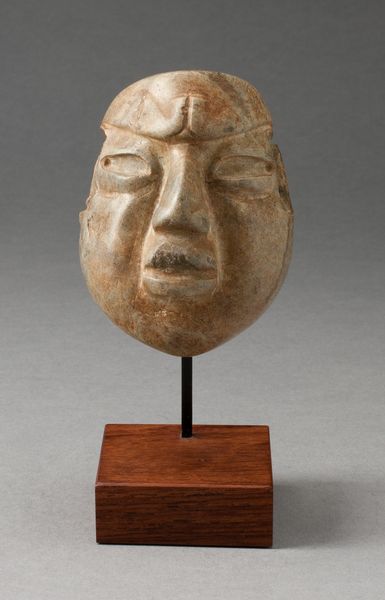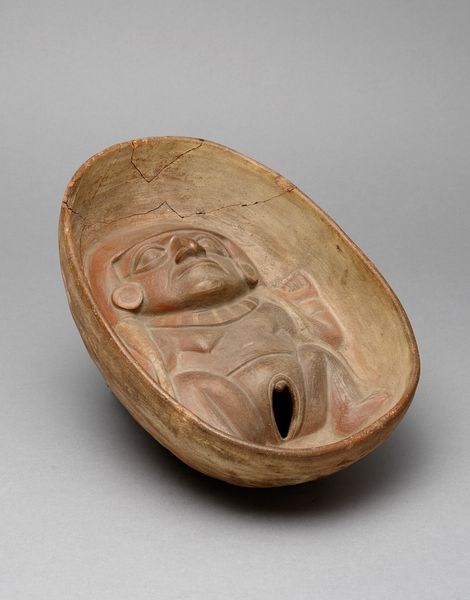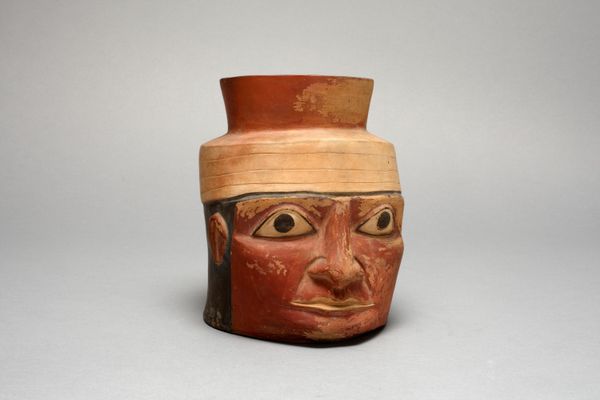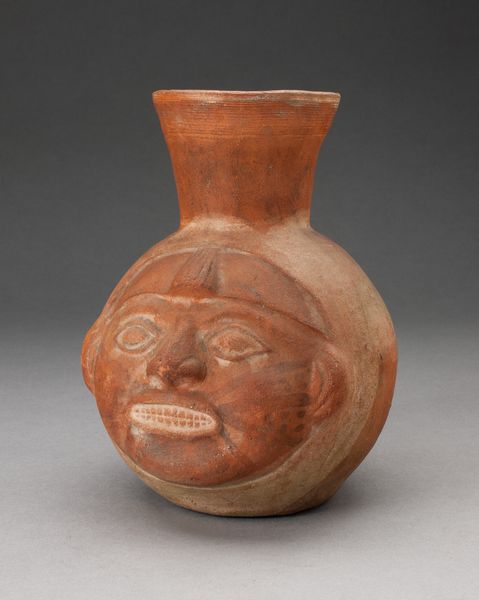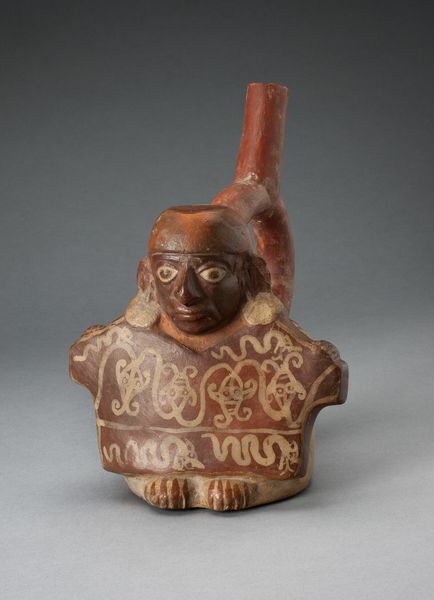
Stirrup Spout Vessel with Missing Handle in the Form of a Head Wraped in Textile c. 100 - 500
0:00
0:00
ceramic, terracotta
#
portrait
#
ceramic
#
figuration
#
terracotta
#
indigenous-americas
Dimensions: 27.3 × 19.4 cm (10 3/4 × 7 5/8 in.)
Copyright: Public Domain
Curator: We’re looking at a remarkable ceramic work from the Moche culture, a civilization that thrived in ancient Peru. It’s titled “Stirrup Spout Vessel with Missing Handle in the Form of a Head Wrapped in Textile,” dating roughly from 100 to 500 CE. Editor: It immediately strikes me as peaceful, almost meditative. The figure's closed eyes and the soft curve of the textile wrapping their head create a feeling of serene contemplation. But there's also a hint of sadness in the set of their mouth, isn’t there? Curator: Yes, it’s a nuanced portrait. The image is replete with symbols related to death and ancestor veneration and suggests cyclical cultural memory as passed on across generations. We can imagine textiles not simply as coverings, but as visual languages—coded with specific meanings of cultural import. Editor: Absolutely. Textiles held immense value, functioning as both material wealth and encoded narratives. This piece visualizes that interconnectedness so beautifully. The rendering of the textile, note the subtle variations in color and texture, adds another layer to the sculpture. This act of remembrance brings up an important topic that still rings true today. Even if an object appears gender neutral at face value, is it really, historically? This person's representation, likely a man, wrapped in textile opens many important questions and interpretations. Curator: The stirrup spout, even with its broken handle, adds another element. The liquid poured from it would have had symbolic, perhaps ritualistic meaning. The ceramic itself as a symbol—from earth and water molded and given fire… Editor: A profound cycle of transformation and the vessel carrying life-sustaining nourishment. How did you land on the cycle symbol? The round face of this sculpture can represent the world, full and inclusive. Also, you touch upon this point regarding vessel holding liquids which connects the container, which often women are symbolized as, with the masculinity of this male figure, who is wrapped, in what may or may not be seen as feminine clothing. It begs us to question, where do these labels that determine masculine from feminine come from? It speaks to a potential narrative regarding how we understand and accept varying types of presentation. Curator: Yes, I find these pieces have an enormous psychological depth that reflects archetypal symbolism. In this way, the vessels have retained their symbolic, even talismanic power, across millennia. Editor: It certainly gives me a lot to think about, especially about how we can respectfully engage with the complexities of the past. I walk away from this with an inspiration that it's important to not create or hold steadfast to binary standards and expectations in our current day-to-day life. What’s your biggest take away after talking this sculpture out? Curator: An appreciation of art history’s capacity to allow cultural legacies from remote locations, like Moche Peru, to come back and continue expressing a powerful vision to this day.
Comments
No comments
Be the first to comment and join the conversation on the ultimate creative platform.
